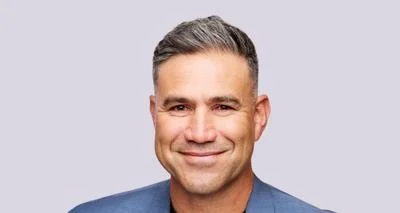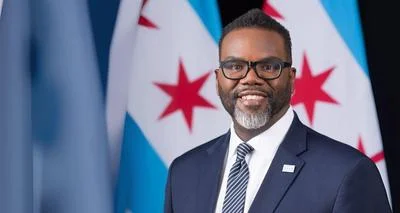CPS teachers threaten a strike in 2012. | Flickr
CPS teachers threaten a strike in 2012. | Flickr
The Chicago Public Schools (CPS) have blown their annual budgets in 15 of the past 15 years by a collective $6.6 billion, amassing debt to continually increase spending on operations while district student enrollment has steadily fallen.
That’s according to an analysis of CPS financial reporting to the State of Illinois by Local Government Information Services (LGIS), which publishes Chicago City Wire.
In 2002, CPS had an average daily attendance of 382,394 and spent $4 billion, or $5.3 billion in today’s dollars.
By 2016, CPS’ attendance had fallen eight percent, to 351,726. But its spending had risen 15 percent, to $6.1 billion, adjusted for inflation.
All told, CPS has received $71.7 billion in taxpayer dollars over the past 15 years.
But it has spent $78.2 billion, an average of $440 million annually in excess of what it has had to spend.
Familiar territory
The LGIS analysis comes as CPS is threatening to close its schools early, claiming it has a $600 million “budget hole” this year.
But LGIS found that CPS has routinely faced similarly large deficits in the past, albeit with less fanfare.
Since 2003, CPS has overspent by more than $600 million on five occasions, including in each of the past three years.
From 2014 to 2016, CPS ran budget deficits of $891 million, $1.1 billion, and $968 million, respectively. It overspent by $672 million in 2009 and $668 million in 2010.
To be sure, these aren’t the budgets CPS presents to the public.
CPS received an “award” for the presentation of its 2013 budget, which proposed $5.23 billion in spending. But it spent $5.72 billion that year-- nearly half a billion more than it said it would.
In Aug. 2014, CPS presented its 2015 budget, claiming it would spend $5.75 billion. ISBE reports show its revenue projections were too rosy; it brought in $300 million less than expected.
But CPS didn’t cut back to make ends meet. Rather, it spent even more, spending a record $6.39 billion that year, even though year-over-year district enrollment had fallen.
The net result: the school district is not only out of cash but has $6.7 billion in debt, according to the Illinois State Board of Education (ISBE).
That’s in addition to CPS’ unfunded pension debt, which it estimated to be $9.64 billion as of June 30, 2016, according to a filing with the Illinois Department of Insurance (DOI). It is believed to be much higher.
The DOI filing reports that, in 2016, the Public School Teachers’ Pension & Retirement Fund of Chicago paid out a total of $1.58 billion to retirees.
The fund generated just $7.8 million in investment income.
State, federal subsidy for CPS is already near the top
School officials and Chicago Mayor Rahm Emanuel have publicly blamed their financial woes on the State of Illinois. But CPS already receives more state and federal taxpayer subsidies than nearly every other school district in the Chicagoland area.
An LGIS analysis of school funding at 303 districts in Cook and the collar counties ranked CPS 14th in non-local funding. It is behind only the poorest suburban districts, which have considerably less property wealth than Chicago.
The analysis accounts for state-funded pension contributions on behalf of suburban and downstate school districts, a source of consternation for Emanuel, who routinely claims the state’s school funding system isn’t “fair” because it doesn’t pay for the pensions of Chicago teachers.
Last year, CPS received 45 percent of its funding from state and federal sources.
Pembroke CCSD 259 in the impoverished community of Hopkins Park received the most-- 52 percent.
Others receiving more outside taxpayer support than CPS: Harvey District 152 (51 percent), Posen-Robbins District 143-5 (49 percent), Sauk Village CCSD 168 (48 percent), North Chicago District 187 (48 percent), Cicero District 99 (48 percent), Aurora East District 131 (48 percent), Lincoln District 156 in Calumet City (47 percent), West Harvey-Dixmoor District 147 (47 percent), Maywood District 89 (47 percent), Berwyn North District 98 (47 percent), Kankakee District 111 (46 percent) and Chicago Heights District 170 (46 percent).
In contrast, 186 of 303 Chicago area school districts analyzed received less than 20 percent or less of their funding from non-local sources.
----
Budget-less? How did Chicago Public Schools run out of money, amassing $6.6 billion in debt?
Chicago Public Schools have steadily increased spending over the past 15 years, while district enrollment continues to fall.
| Year | Spending | Tax Revenue | +/- | Enrollment | Per-Pupil |
| 2016 | $6,072,875,311 | $5,181,777,076 | $891,098,235 | 351,726 | $17,266 |
| 2015 | $6,385,079,965 | $5,293,733,934 | $1,091,346,031 | 353,469 | $18,064 |
| 2014 | $6,306,832,289 | $5,338,382,580 | $968,449,709 | 355,634 | $17,734 |
| 2013 | $5,723,359,282 | $5,281,589,265 | $441,770,017 | 351,726 | $16,272 |
| 2012 | $5,731,585,049 | $5,652,301,512 | $79,283,537 | 355,105 | $16,141 |
| 2011 | $5,680,099,797 | $5,534,664,416 | $145,435,381 | 350,827 | $16,191 |
| 2010 | $5,858,666,583 | $5,190,900,180 | $667,766,403 | 360,511 | $16,251 |
| 2009 | $5,548,468,036 | $4,876,952,232 | $671,515,804 | 349,636 | $15,869 |
| 2008 | $4,925,866,593 | $4,826,090,184 | $99,776,409 | 352,631 | $13,969 |
| 2007 | $4,668,068,947 | $4,655,795,074 | $12,273,873 | 358,634 | $13,016 |
| 2006 | $4,429,792,279 | $4,318,229,723 | $111,562,556 | 368,516 | $12,021 |
| 2005 | $4,427,473,296 | $4,062,139,070 | $365,334,226 | 374,527 | $11,822 |
| 2004 | $4,311,272,879 | $4,021,453,636 | $289,819,243 | 370,986 | $11,621 |
| 2003 | $4,183,291,811 | $3,764,219,671 | $419,072,140 | 383,271 | $10,915 |
| 2002 | $3,986,076,140 | $3,667,171,877 | $318,904,263 | 382,394 | $10,424 |
| TOTALS | $78,238,808,257 | $71,665,400,430 | $6,573,407,827 |
Source: Illinois State Board of Education






 Alerts Sign-up
Alerts Sign-up